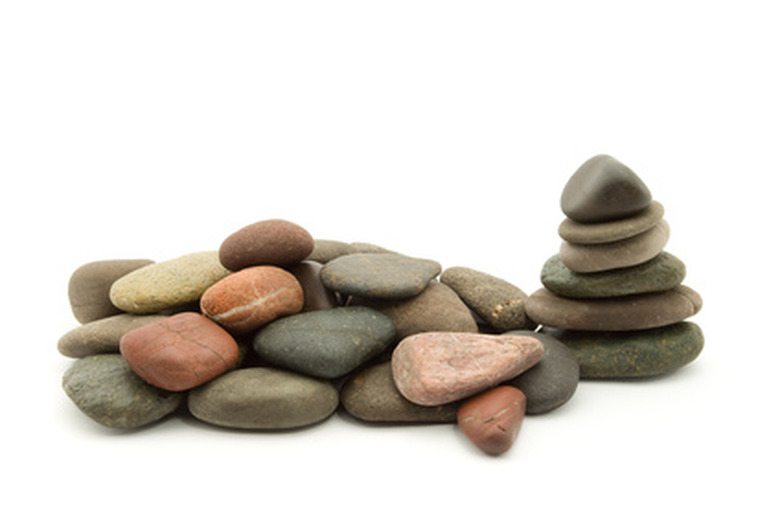How To Identify Crystals Found Within Rocks Or Stones
Many rocks have crystals embedded on their surfaces, within the rocks or are considered to be crystals. Crystals have flat surfaces which can be either large or small. Crystals with small flat surfaces are said to have "facets." All crystals have a faceted surface, but not all crystals have multiple facets. Many excellent books and websites have been written to help identify crystals on or within rocks. Collect several rock samples with crystals before identifying them.
Step 1
Wash the collection of rocks with water. Use an old toothbrush to remove any dirt in the crevasses or cracks of the stone.
Step 2
Wipe the rocks off with a soft cloth. Let the rocks sit for 30 minutes until dry.
Step 3
Look at the crystals in the rock using a magnifying lens.
Step 4
Use a book that identifies types of rocks and crystals to identify the crystals in the rocks you are examining.
Step 5
Carefully examine the rock's crystals and compare them to the pictures in the book. Find the one that looks most like the crystal in your rock.
Step 6
Use the same process to identify the rocks and crystals using the Internet. Also search for rock, crystal or rock and crystal identification websites. Look at the crystal using a magnifying lens. Compare it to the pictures of crystals on the Internet.
Step 7
Take the washed rock to the local school system. Ask to speak to the high school science teacher. Show the science teacher the stone and ask for their opinion. Look at any books the science teacher may have on rock identification.
Things Needed
- Rock identification books
- Internet
- Magnifying lens
- Old toothbrush
- Soft cloth
- Rock collection
Cite This Article
MLA
Blakesley, Kim. "How To Identify Crystals Found Within Rocks Or Stones" sciencing.com, https://www.sciencing.com/identify-found-within-rocks-stones-6949090/. 24 April 2017.
APA
Blakesley, Kim. (2017, April 24). How To Identify Crystals Found Within Rocks Or Stones. sciencing.com. Retrieved from https://www.sciencing.com/identify-found-within-rocks-stones-6949090/
Chicago
Blakesley, Kim. How To Identify Crystals Found Within Rocks Or Stones last modified August 30, 2022. https://www.sciencing.com/identify-found-within-rocks-stones-6949090/
